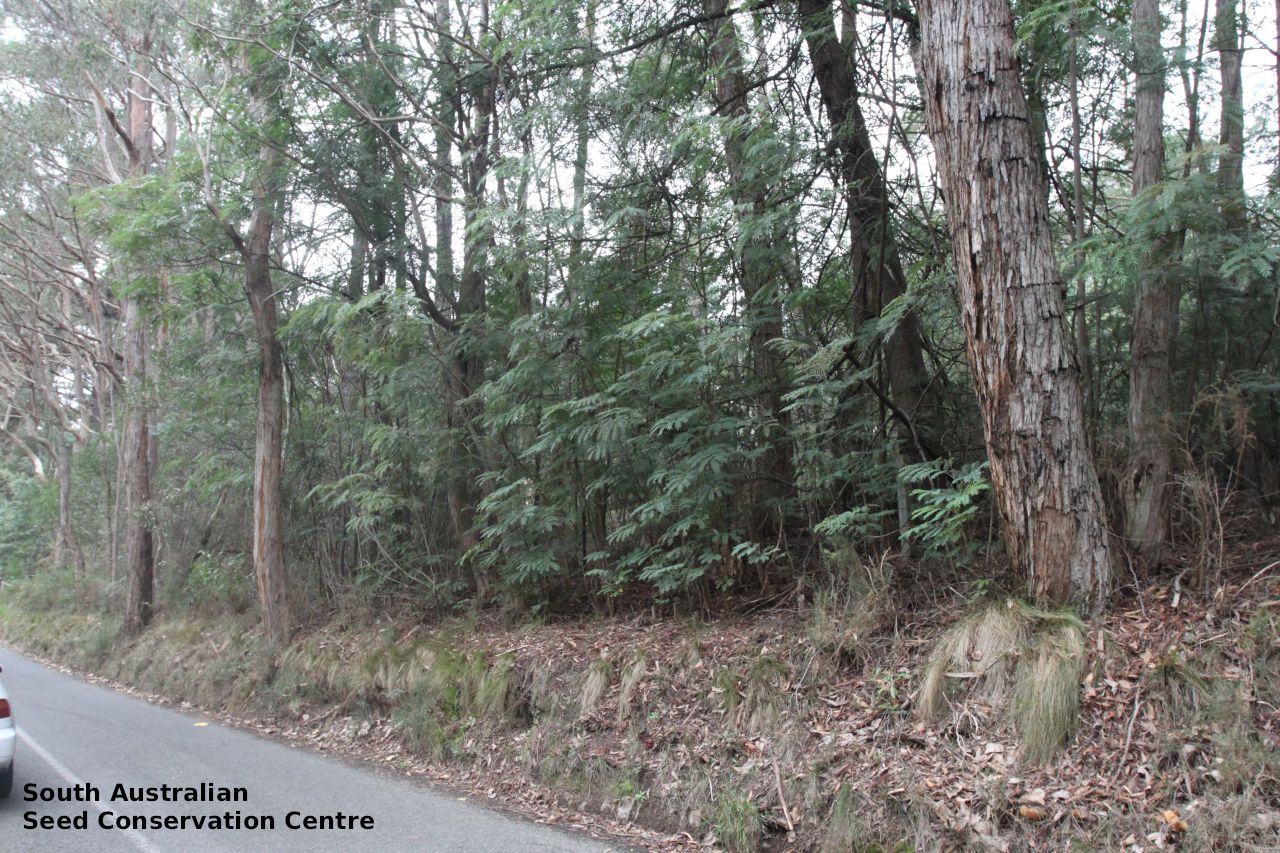
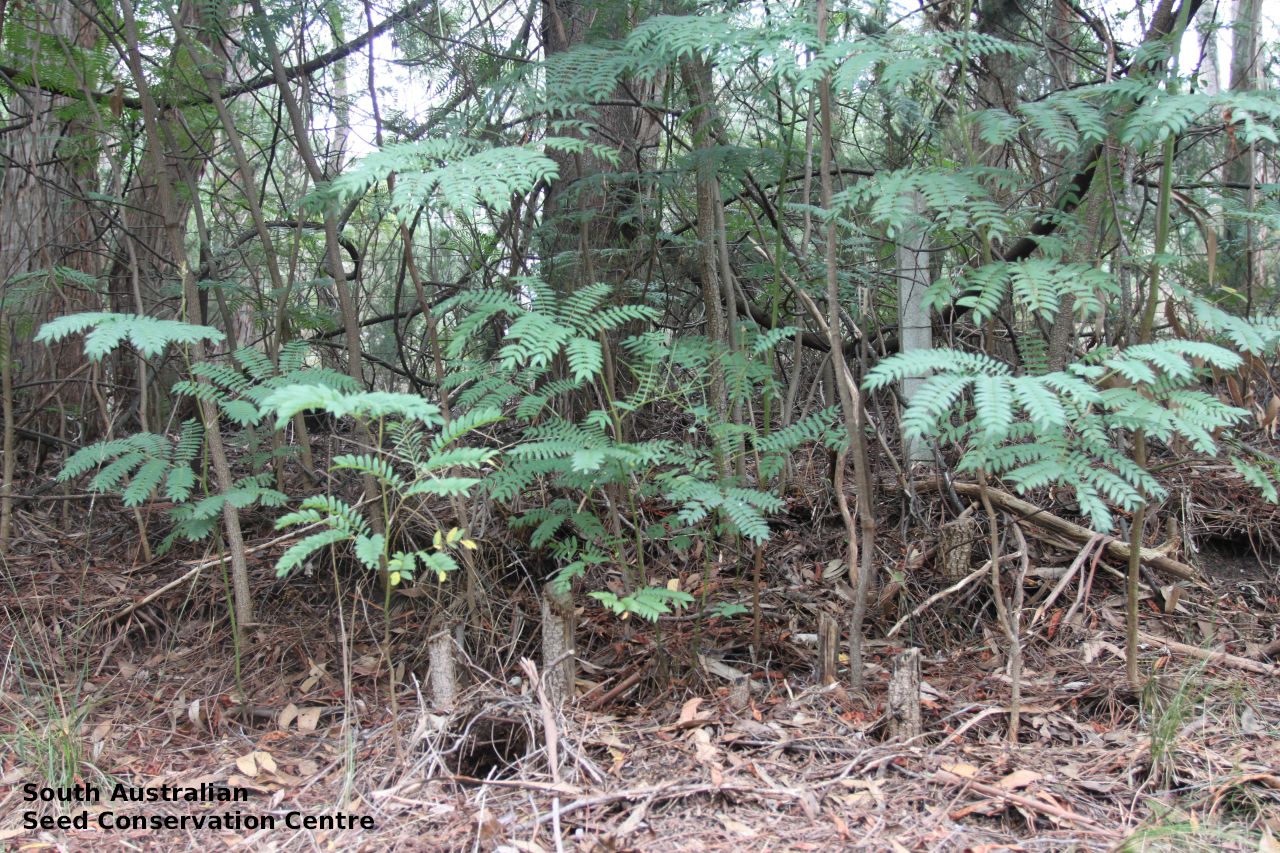
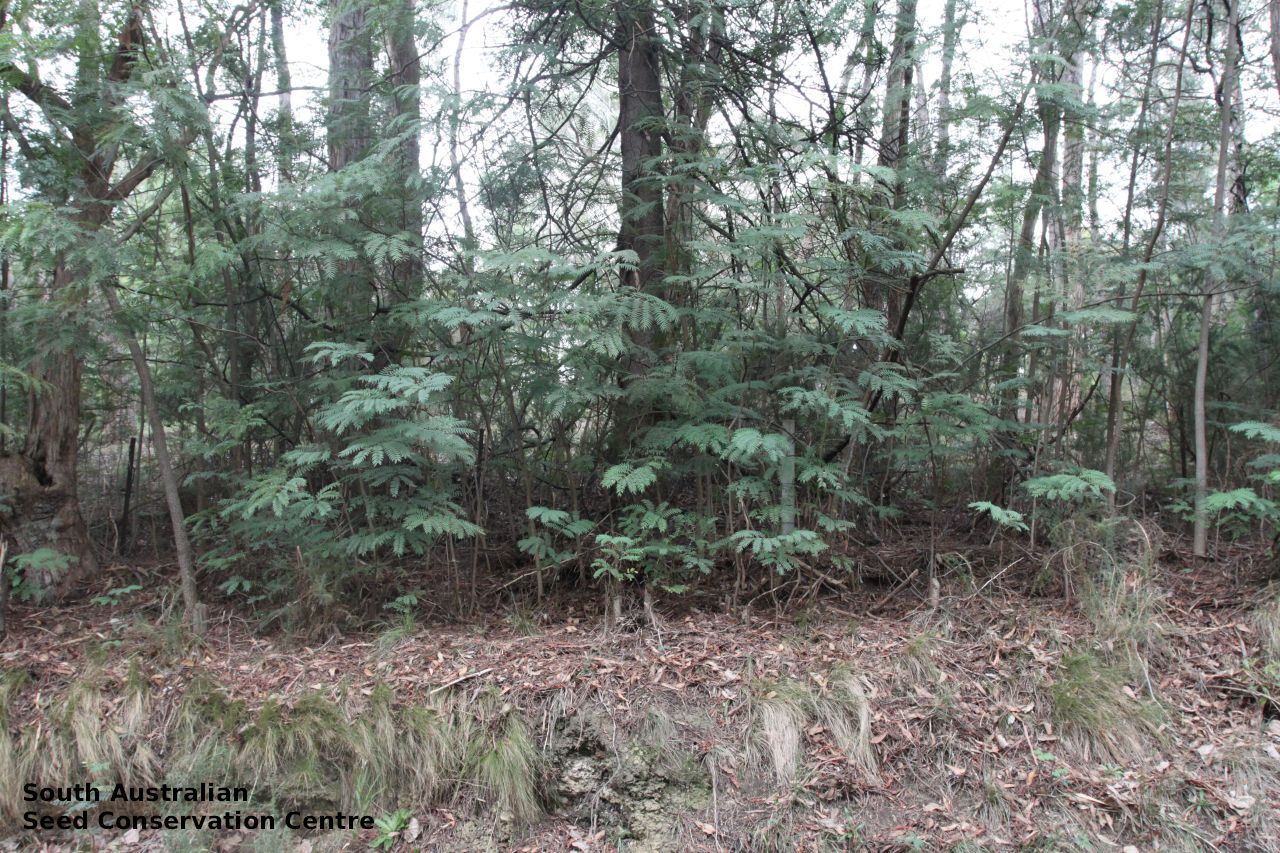
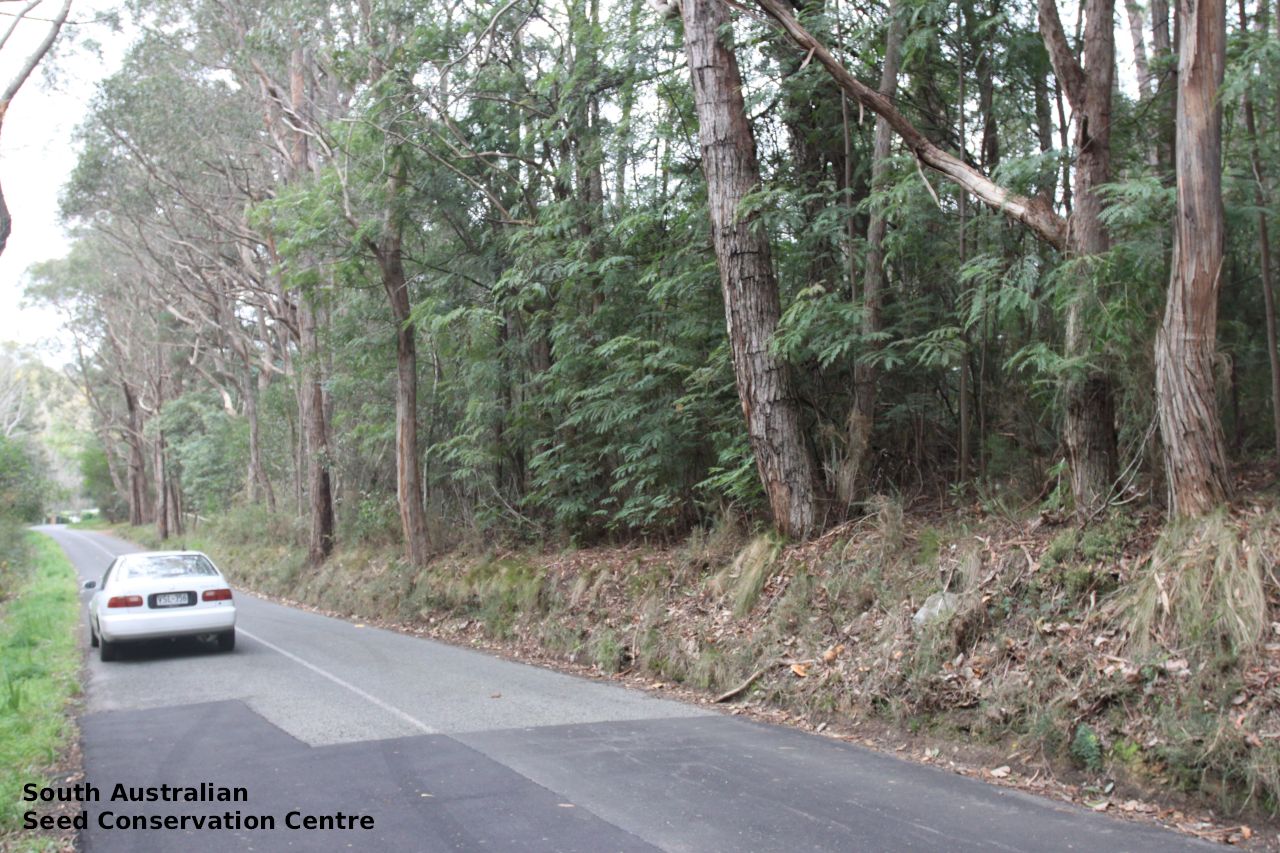
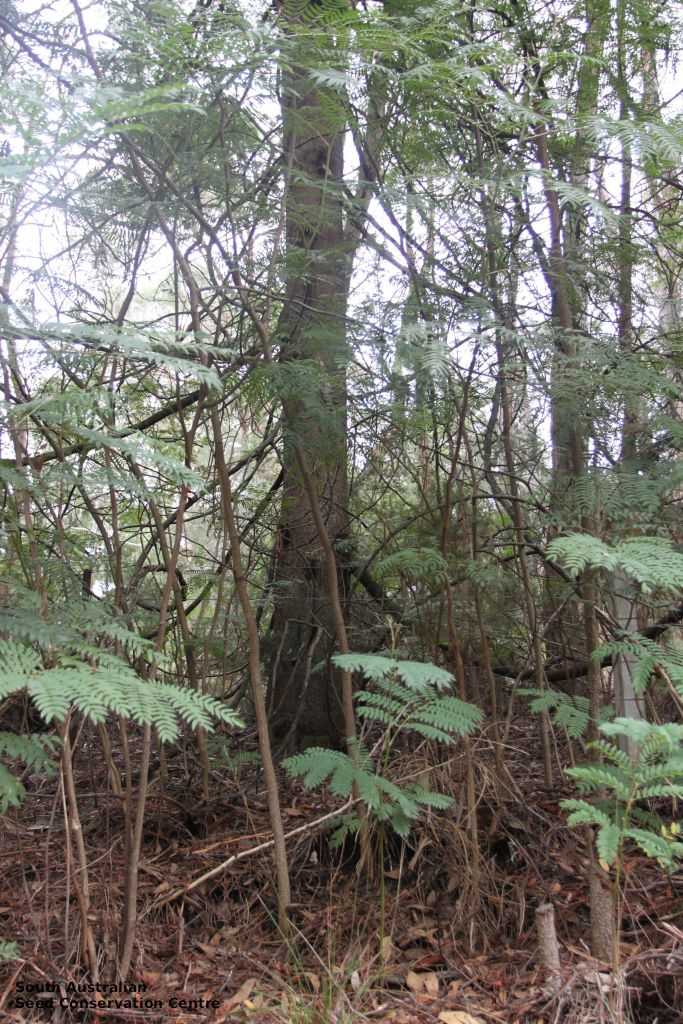
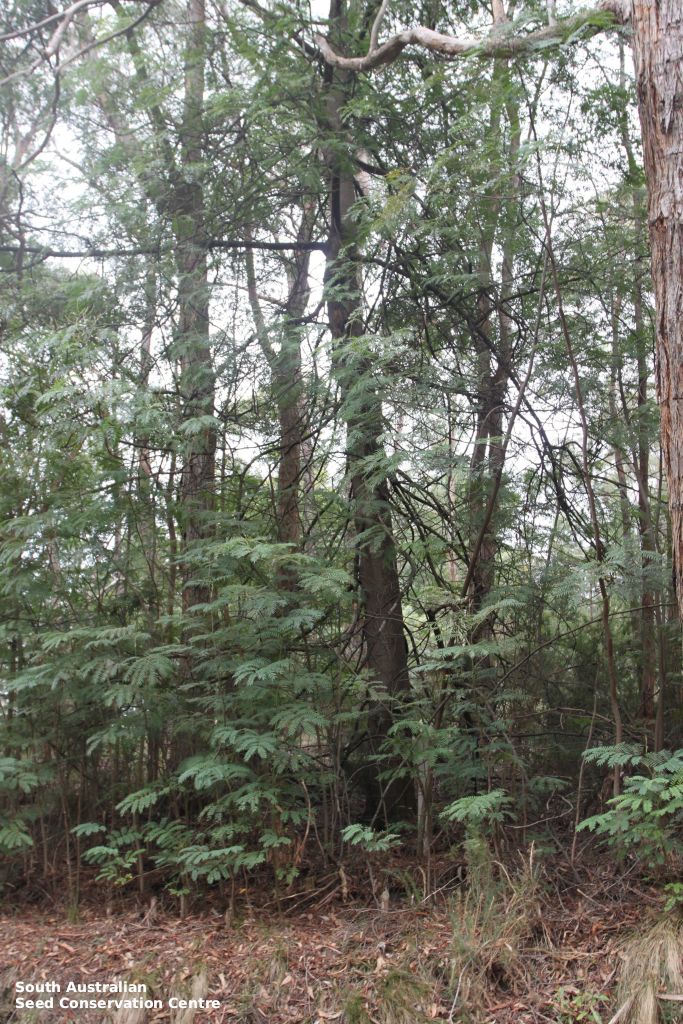


Botanical art
Common names
Cedar Wattle
Mountain Cedar Wattle
Etymology
Acacia from the Greek 'akakia' and derived from 'ake' or 'akis' meaning a sharp point or thorn and 'akazo' meaning to sharpen. Dioscorides, the Greek physician and botanist used the word in the 1st century AD for the Egyptian thorn tree, Acacia arabica. Elata he name refers to its tall, tree-like habit.
Distribution and status
Commonly grown shade tree which has become naturalised in the Mount Lofty Ranges in South Australia, growing in moist forest. Native to part of New South Wales and naturalised in Queensland and Victoria. Introduced. Common in South Australia. Common in the other States.
Herbarium region: Southern Lofty
NRM region: Adelaide and Mount Lofty Ranges
AVH map: SA distribution map (external link)
Plant description
Large erect tree to 20 m high with dark brown to black, deeply fissured bark. Leaves bipinnate, medium green above, paler below with up to 10-20 well separated, lanceolate paired leaves. Inflorescences a raceme or panicle, globular heads with creamy-yellow flowers. Flowering between December and February. Fruits more or less flat pod, almost straight to 15 cm long and 14 mm wide, dark grey to brownish. Seed embryo type is investing.
Seed collection and propagation
Collect seeds between February and April. Collect mature pods that are turning brown, with hard, dark seeds inside. Place the pods in a tray and leave to dry for 1-2 weeks or until the pods begin to split. Then rub the dried pods to dislodge the seeds. Use a sieve to separate any unwanted material. Store the seeds with a desiccant such as dried silica beads or dry rice, in an air tight container in a cool and dry place. This species has physical dormancy that needs to be overcome for the seed to germinate (e.g. nicking or softening the seed coat).